Gabriel García Márquez’s tale explores human reactions to the extraordinary through magical realism, blending faith, doubt, and isolation in a captivating narrative.
1.1 Overview of the Story
The story revolves around the discovery of a mysterious old man with enormous wings in a small village during a rainstorm. Pelayo and Elisenda, the protagonists, find the man in their courtyard and decide to keep him in a chicken coop. The villagers react with a mix of fear, curiosity, and skepticism, unsure whether the man is an angel or a mere mortal. The narrative explores themes of faith, doubt, and humanity’s reaction to the extraordinary, blending magical realism with everyday life to create a captivating and thought-provoking tale.
1.2 The Author: Gabriel García Márquez
Gabriel García Márquez (1927-2014) was a celebrated Colombian novelist, short-story writer, and journalist. Renowned for his magical realism, he explored the extraordinary within everyday life. His works, such as One Hundred Years of Solitude, captivated global readers. Márquez received the 1982 Nobel Prize in Literature, solidifying his influence on 20th-century literature. His unique style blended fantasy with reality, creating immersive narratives. A Very Old Man with Enormous Wings exemplifies his mastery of magical realism, offering profound insights into human nature and the intersection of faith and doubt.
1.3 The Genre: Magical Realism
Gabriel García Márquez’s story is a quintessential example of magical realism, blending the extraordinary with the mundane. This literary genre combines realistic depictions of everyday life with magical or fantastical elements, presented as normal. In A Very Old Man with Enormous Wings, the old man’s celestial appearance coexists with the villagers’ ordinary lives, creating a seamless fusion of the surreal and the familiar. Márquez’s masterful use of magical realism allows readers to explore deep themes like faith, doubt, and isolation through a narrative that feels both believable and enchanting. This genre has become a hallmark of his writing style.
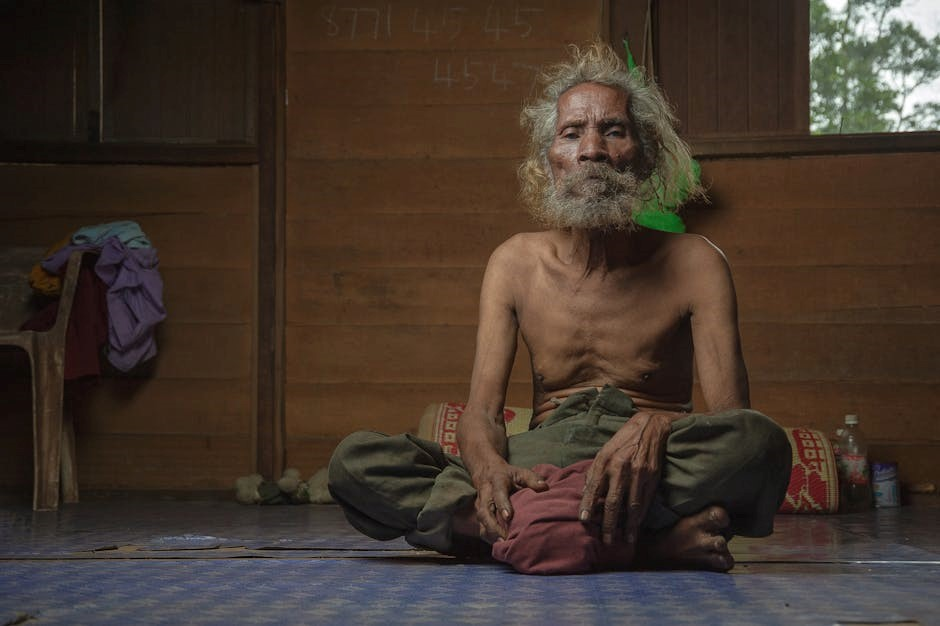
Plot Summary
The story recounts the discovery of a mysterious old man with enormous wings, the villagers’ varied reactions, and his ultimate fate, blending the surreal with the ordinary.
2.1 The Discovery of the Old Man
On the third day of relentless rain, Pelayo discovers a mysterious old man with enormous, tattered wings in his courtyard. The man, resembling a fallen angel, is filthy and frail. Pelayo and his wife, Elisenda, are shocked and puzzled by the sight. Initially fearing the man might be an angel, they gradually realize his humanity. Despite his divine appearance, the old man is treated with suspicion and curiosity. The villagers gather, some believing him to be a divine being, while others dismiss him as a fraud. Pelayo confines him to a chicken coop, marking the beginning of his peculiar presence in their lives.
2.2 Reactions of the Villagers
The villagers react with a mix of awe, curiosity, and fear upon discovering the old man with enormous wings. Some believe him to be an angel, seeking miracles and blessings, while others dismiss him as a mere mortal. Father Gonzaga, the local priest, attempts to verify the man’s divine nature but finds no conclusive evidence; The villagers’ fascination fades over time, replaced by indifference and exploitation. Pelayo and Elisenda capitalize on the situation, charging visitors to see the old man, while the man himself remains a silent, enigmatic figure, enduring his confinement with quiet resignation.
2.3 The Old Man’s Fate
The old man’s fate is marked by neglect and indifference as the villagers’ initial fascination wanes. Over time, his extraordinary presence becomes ordinary, and he is treated more as a curiosity than a divine being. Despite his immense wings, he grows weaker, his beauty fading alongside the villagers’ interest. Eventually, after years of confinement, the old man regains his strength and mysteriously disappears, leaving behind only the memory of his enigmatic existence. His departure, like his arrival, remains shrouded in mystery, leaving the villagers with a lingering sense of wonder and unanswered questions.
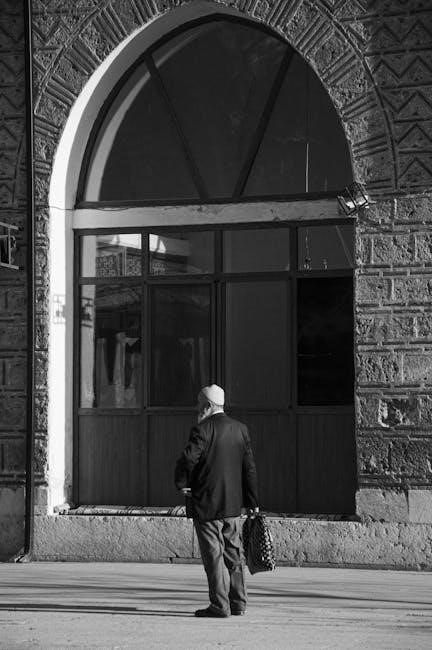
Major Themes
The story explores themes of humanity’s reaction to the extraordinary, faith and doubt, and isolation, highlighting how ordinary people respond to the supernatural and divine.
3.1 Humanity’s Reaction to the Extraordinary
The story delves into how people respond to the supernatural, blending awe, fear, and confusion. The villagers, faced with an angel-like figure, struggle to reconcile the divine with the mundane. Initially, they are drawn to the old man’s presence, seeking miracles and answers. However, as time passes, their fascination wanes, and indifference takes over. This reaction underscores the human tendency to normalize the extraordinary, revealing a duality of compassion and cruelty. The narrative critiques societal behavior, highlighting how the unknown often provokes both reverence and rejection, reflecting deeper truths about human nature and our complex relationship with the divine.
3.2 Faith and Doubt
The story examines the interplay between faith and doubt, as the villagers grapple with the old man’s divine appearance. Initially, they see him as an angel, seeking miracles and spiritual guidance. However, his feeble state and lack of heavenly demeanor stir confusion and skepticism. Father Gonzaga’s attempt to verify his divinity highlights the tension between religious belief and rationality. The narrative questions the nature of faith, revealing how it can inspire both devotion and doubt. This ambiguity reflects the human struggle to reconcile the extraordinary with the mundane, challenging perceptions of the divine and its role in everyday life.
3.3 Isolation and Loneliness
The old man with enormous wings embodies profound isolation and loneliness, confined to a chicken coop and treated as an outcast. Despite his celestial appearance, the villagers’ curiosity fades, leaving him in solitude. His inability to connect with others highlights the cruelty of neglect. The story underscores how even the extraordinary can be ignored, reflecting the human tendency to dismiss what we don’t understand. This isolation serves as a poignant commentary on loneliness, emphasizing the emotional and physical detachment of the old man from the world around him, despite his divine presence.

Key Symbols
The story’s key symbols include the enormous wings, representing divinity and mystery, the chicken coop, symbolizing degradation, and the rain and mud, signifying gloom and chaos.
4.1 The Enormous Wings
The enormous wings are the story’s central symbol, representing divinity, mystery, and the supernatural. They are described as dirty, half-plucked, and entangled in mud, highlighting the old man’s suffering. The wings evoke both fascination and fear, embodying humanity’s complex reaction to the extraordinary. Their grandeur contrasts with the man’s frailty, symbolizing the clash between the divine and the mundane. The wings also serve as a metaphor for isolation, as they make the old man an outcast, unable to connect with the villagers. Their presence challenges the villagers’ understanding of faith and reality, making them a powerful and enduring image in the narrative.
4.2 The Chicken Coop
The chicken coop serves as a symbolic space of confinement and degradation, where the old man is kept by Pelayo and Elisenda. This humble, dirty structure contrasts sharply with the grandeur of his enormous wings, emphasizing his mistreatment and the villagers’ lack of reverence. The coop represents the mundane and pragmatic approach of the villagers, who fail to recognize the divine nature of the old man. It also symbolizes his isolation and the dehumanizing conditions he endures, highlighting themes of disrespect and the failure to acknowledge the extraordinary in the ordinary. The coop becomes a metaphor for societal indifference and moral decay.
4.3 The Rain and Mud
The persistent rain and mud in the story create a somber, chaotic atmosphere, mirroring the disruption caused by the old man’s arrival. The rain symbolizes divine presence, while the mud represents earthly suffering and decay. The old man, entangled in the mud, embodies the clash between the celestial and the mundane. The villagers’ reactions are shaped by this environment, as the rain disrupts their routine and the mud signifies impurity. This duality underscores the story’s themes of faith, doubt, and the extraordinary existing within the ordinary, while highlighting the old man’s plight and the villagers’ ambivalence toward his presence.
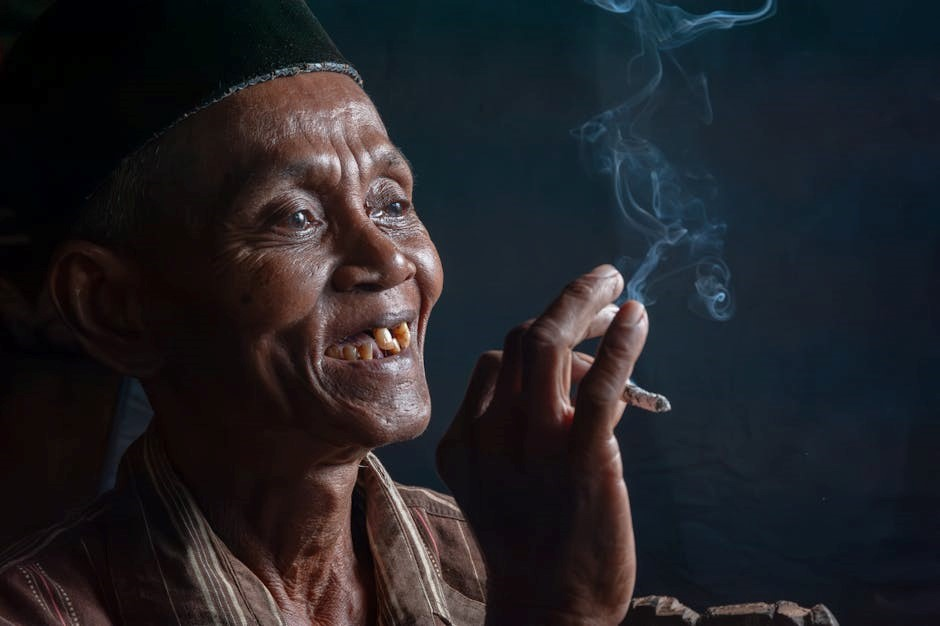
Character Analysis
The old man with enormous wings embodies divine mystery and human neglect, while Pelayo and Elisenda represent ordinary people grappling with the extraordinary, revealing their fears and compassion.
5.1 The Old Man with Enormous Wings
The old man with enormous wings is a mysterious figure, embodying both divine and human qualities. His massive, dirty wings symbolize a fallen or neglected angel. Despite his celestial appearance, he is treated with suspicion and cruelty by the villagers, who fail to recognize his true nature. His presence sparks fear, curiosity, and exploitation, highlighting humanity’s ambivalence towards the extraordinary. The old man’s silence and endurance underscore themes of isolation and the mundane coexisting with the magical. His character challenges readers to reflect on compassion, faith, and the treatment of the unknown.
5.2 Pelayo and Elisenda
Pelayo and Elisenda are ordinary villagers whose lives are disrupted by the old man’s arrival. Pelayo, practical and cautious, sees the man as a burden, while Elisenda, more pragmatic, views him as an opportunity for profit. Their reactions reflect human tendencies to exploit or dismiss the extraordinary. Despite their initial kindness, they fail to recognize the man’s divine nature, instead confining him to a chicken coop. Their evolving attitudes reveal the complexities of human behavior, blending curiosity, greed, and eventual indifference. Together, they embody the duality of compassion and exploitation in the face of the unknown.
5.3 Father Gonzaga
Father Gonzaga, a skeptical priest, seeks to verify the old man’s divine nature. He examines the man, searching for signs of sainthood or angelic qualities. However, the old man’s inability to speak Latin or perform miracles leads Gonzaga to doubt his divinity. His skepticism influences the villagers, reinforcing their confusion and indifference. Gonzaga’s character highlights the tension between institutional religion and the mysterious, as he struggles to reconcile the extraordinary with traditional beliefs. His inability to confirm the old man’s identity underscores the story’s exploration of faith, doubt, and the limitations of human understanding in the face of the unknown.
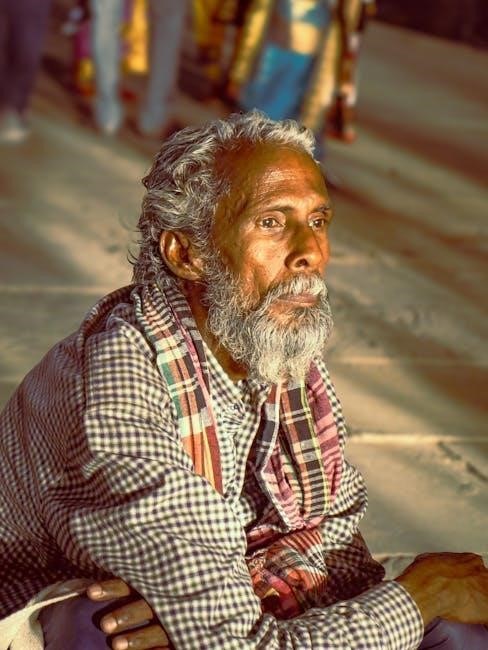
Literary Devices
Márquez employs magical realism, blending the supernatural with everyday life. Vivid imagery and irony highlight humanity’s mundane reactions to the extraordinary, creating a layered narrative experience.
6.1 Magical Realism in the Story
Márquez masterfully blends the supernatural with the mundane, as an angelic figure with enormous wings appears in a small village. The villagers’ ordinary reactions to this extraordinary being exemplify magical realism. The story seamlessly integrates the mystical elements of the old man’s wings with the everyday struggles of the characters, creating a unique narrative where the surreal becomes normal. This technique allows readers to reflect on human nature, faith, and isolation through a lens of both wonder and familiarity, making the tale universally relatable and thought-provoking.
6.2 Use of Imagery
Gabriel García Márquez employs vivid imagery to create a powerful and evocative atmosphere in A Very Old Man with Enormous Wings. The description of the old man’s “huge buzzard wings, dirty and half-plucked” immediately captures the reader’s imagination. The setting, with its relentless rain and mud, adds to the sensory experience. Imagery also highlights the villagers’ reactions, as they gaze at the mysterious figure with a mix of curiosity and fear. These visual elements not only enrich the narrative but also deepen the story’s emotional and thematic layers, making the extraordinary seem almost ordinary. The imagery is both haunting and beautiful, lingering in the reader’s mind.
6.3 Irony and Contrast
The story masterfully uses irony and contrast to highlight the tension between the divine and the mundane. The old man, with his enormous wings, symbolizing something extraordinary, is confined to a chicken coop, a stark contrast to his celestial nature. The villagers, initially fascinated, soon treat him with indifference, reflecting human tendency to normalize the extraordinary. Irony lies in their failure to recognize the spiritual significance of the old man, instead viewing him as a curiosity. This contrast between expectation and reality underscores the themes of faith, doubt, and the human condition, making the narrative both poignant and thought-provoking.
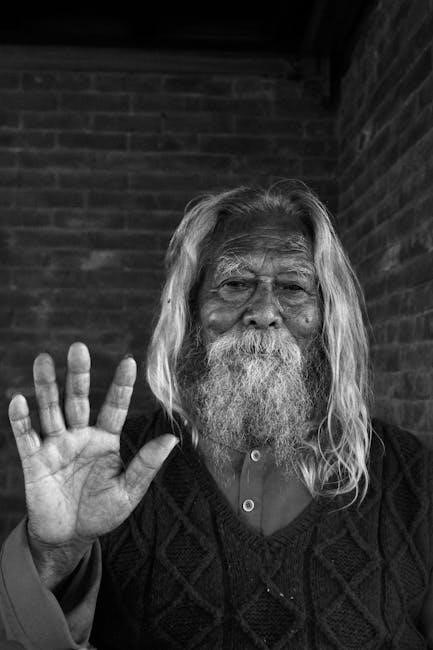
Cultural and Historical Context
Gabriel García Márquez’s story reflects Colombian culture and folklore, blending magical realism with everyday village life. The time period and remote coastal setting add depth to its universal themes.
7.1 Colombian Culture and Folklore
The story is deeply rooted in Colombian culture and folklore, where magical realism blends seamlessly with everyday life. Drawing from rich cultural traditions, García Márquez crafts a narrative that reflects the nation’s spiritual and social fabric. The tale embodies the Colombian penchant for storytelling, where the supernatural coexists with the mundane. The remote coastal setting, typical in Colombian folklore, enhances the mystical atmosphere. Religious influences, particularly Catholicism, shape the villagers’ reactions, showcasing a society grappling with faith and doubt. This cultural backdrop enriches the tale, making it a quintessential representation of Colombian identity and folklore.
7.2 The Influence of Religion
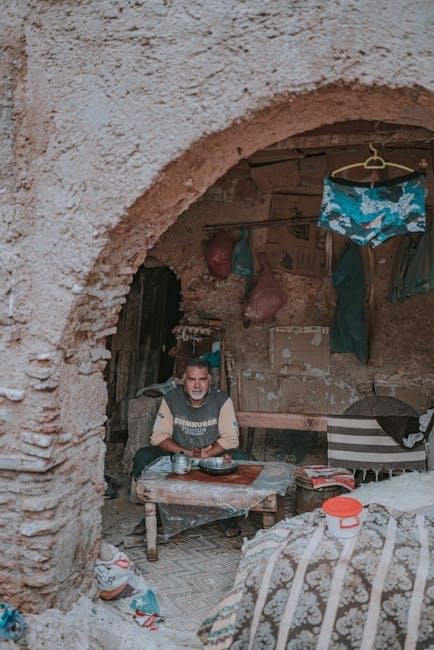
Religion plays a pivotal role in shaping the narrative, reflecting the strong Catholic heritage of Colombia. The villagers’ initial reverence for the old man, viewing him as an angel, highlights their faith’s influence. However, their eventual disillusionment mirrors the tension between religious devotion and human skepticism. Father Gonzaga’s dilemma in verifying the man’s divine nature underscores the Church’s struggle to explain the unexplainable. This interplay between belief and doubt enriches the story, exploring how religious frameworks both inspire and limit human understanding of the extraordinary.
7.3 The Time Period and Setting
The story unfolds during a rainy period in a small, rural Colombian village, creating a somber, introspective atmosphere. The exact time frame isn’t specified, but the setting evokes a sense of isolation and simplicity. The villagers’ modest lifestyle and the presence of a chicken coop highlight the humble, rustic environment. The rain and mud serve as symbolic elements, grounding the magical realism in a tangible, earthly context. This setting reflects the cultural and geographical nuances of Colombia, immersing readers in a world where the extraordinary coexists with everyday life.
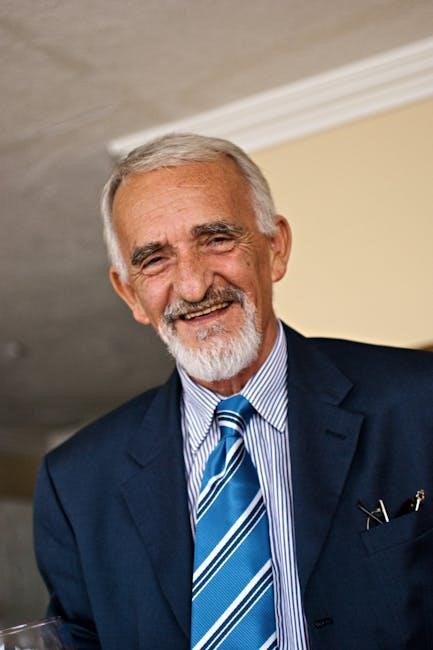
Reception and Legacy
Gabriel García Márquez’s story received critical acclaim, becoming a classic of magical realism. It has been widely studied and adapted, leaving a lasting impact on literature and education.
8.1 Initial Reception of the Story
When first published in 1972, “A Very Old Man with Enormous Wings” captivated readers with its unique blend of magical realism and poignant human drama. The story, initially met with both fascination and confusion, quickly gained recognition for its thought-provoking themes. Its exploration of faith, doubt, and humanity resonated deeply, making it a subject of literary analysis and debate. The tale’s ability to appeal to both children and adults further broadened its audience, solidifying its place as a timeless classic in world literature.
8.2 Critical Acclaim and Awards
Gabriel García Márquez’s “A Very Old Man with Enormous Wings” received widespread critical acclaim for its innovative storytelling and profound themes. The story was praised for its seamless integration of magical realism, earning García Márquez a reputation as a literary genius. His work later contributed to his Nobel Prize in Literature in 1982, further cementing the tale’s legacy. Critics highlighted its universal appeal, exploring human nature through the extraordinary, making it a cornerstone of 20th-century literature and a testament to García Márquez’s unparalleled storytelling ability.
8.3 Adaptations and Interpretations
“A Very Old Man with Enormous Wings” has inspired numerous adaptations, including theatrical productions and musical interpretations. The Kirk Douglas Theater and Project Arts Centre have staged unique performances, blending the story’s magical elements with innovative storytelling. While some adaptations aim to balance appeals to both children and adults, others focus on the narrative’s offbeat charm. These interpretations highlight the story’s versatility, allowing audiences to connect with its themes of humanity and the extraordinary in diverse ways, further enhancing its timeless appeal and universal message.
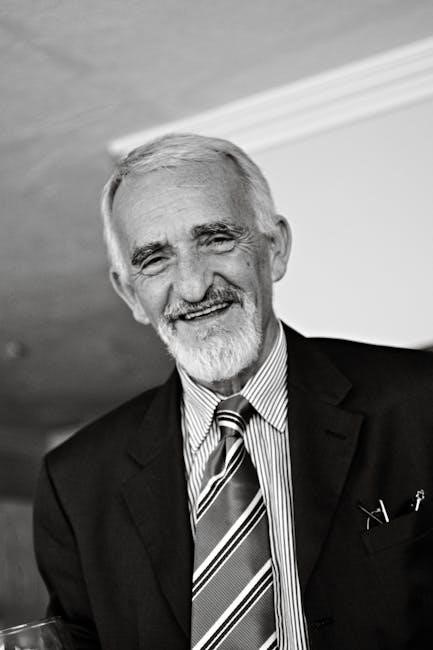
Educational Resources
PDF downloads, study guides, and lesson plans are available online, offering insights into themes, symbols, and literary devices, aiding educational exploration of the story.
9.1 PDF Downloads and Study Guides
PDF versions of A Very Old Man with Enormous Wings are widely available for educational purposes, including a version by Holt, Rinehart and Winston. These downloads provide the full text, making it accessible for classroom use and personal reading. Study guides accompany the PDFs, offering insights into themes, symbols, and literary devices. Resources like ivyleaf.com and educational platforms offer vocabulary definitions and analysis questions. These materials help students and educators delve into the story’s magical realism and universal themes, fostering deeper understanding and critical thinking about the narrative’s complexities and meanings.
9.2 Lesson Plans and Classroom Activities
Lesson plans for A Very Old Man with Enormous Wings often include reading assignments, group discussions, and creative writing tasks. Activities focus on analyzing magical realism, themes like faith and isolation, and interpreting symbols such as the wings. Students explore how villagers react to the extraordinary, fostering critical thinking. Educators use PDF resources to design comprehension exercises and close-reading sessions. Group projects may involve creating alternative endings or artistic depictions of key symbols. These activities engage students with the story’s universal themes and enhance their understanding of literary elements in a dynamic and interactive learning environment.
9.3 Literary Analysis and Commentary
Literary analyses of A Very Old Man with Enormous Wings often explore its use of magical realism to blend the mundane with the extraordinary. Scholars highlight themes such as humanity’s ambivalent response to the divine, faith versus doubt, and the isolating effects of the extraordinary. The old man’s wings symbolize both divine grace and human frailty, sparking interpretations about spirituality and compassion. Commentaries also examine the story’s universal message, transcending cultural and religious boundaries. PDF resources provide in-depth critiques, revealing how Márquez’s mastery of imagery and irony creates a timeless tale that resonates with readers globally.
Gabriel García Márquez’s timeless tale masterfully explores human nature, faith, and isolation. The old man’s wings remain a profound symbol, offering universal lessons in compassion and humility.
10.1 The Timeless Appeal of the Story
A Very Old Man with Enormous Wings captivates readers with its blend of magical realism and relatable human emotions. The story’s enduring appeal lies in its ability to explore universal themes such as faith, doubt, and isolation through a simple yet profound narrative. Marquez’s vivid imagery and the enigmatic figure of the old man with wings continue to resonate across generations, making the tale a cherished classic in world literature. Its adaptability into various formats ensures its relevance and charm remain intact.
10.2 The Universal Message of the Tale
The story conveys a profound message about humanity’s response to the extraordinary and the unknown. It highlights how fear, curiosity, and exploitation often overshadow compassion and understanding. The old man’s isolation and eventual freedom serve as a metaphor for societal treatment of those deemed different. The tale reminds us of the importance of empathy and the fleeting nature of human fascination. Its universal themes transcend cultures, inviting readers to reflect on their own reactions to the extraordinary and the value of kindness in a world often driven by skepticism and indifference.
10.3 Final Thoughts on the Old Man’s Wings
The old man’s enormous wings symbolize both divine mystery and human frailty, sparking curiosity and fear. Their presence challenges the villagers’ understanding of the extraordinary, revealing a duality of awe and indifference. The wings, though majestic, are also a source of the old man’s isolation, highlighting the tension between the sacred and the mundane. Ultimately, the wings remind us of the fleeting nature of wonder and the importance of compassion, leaving a lasting reflection on humanity’s capacity to embrace or reject the unknown. The tale’s final image of the wings underscores the enduring enigma of existence.
